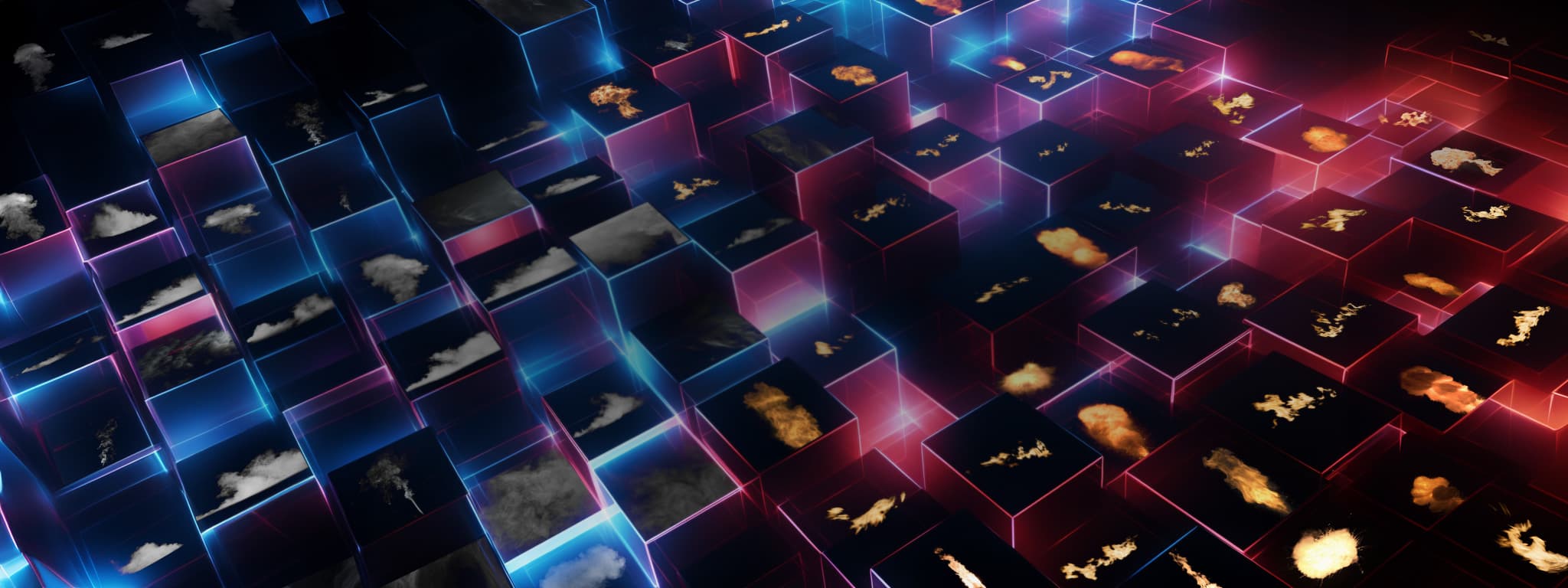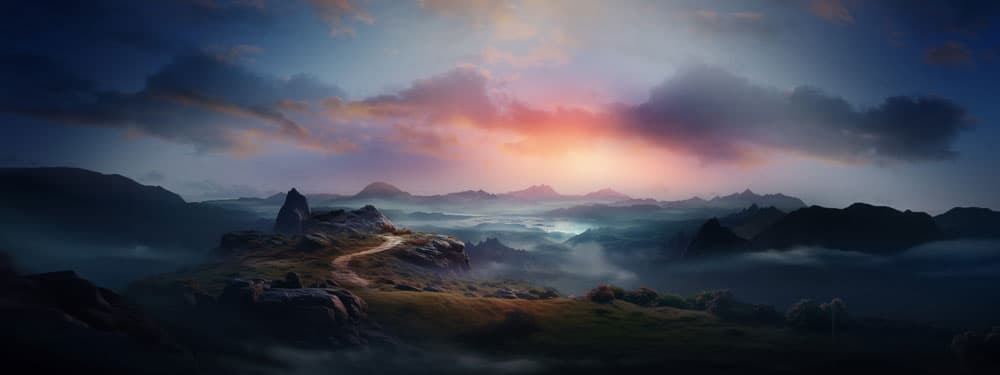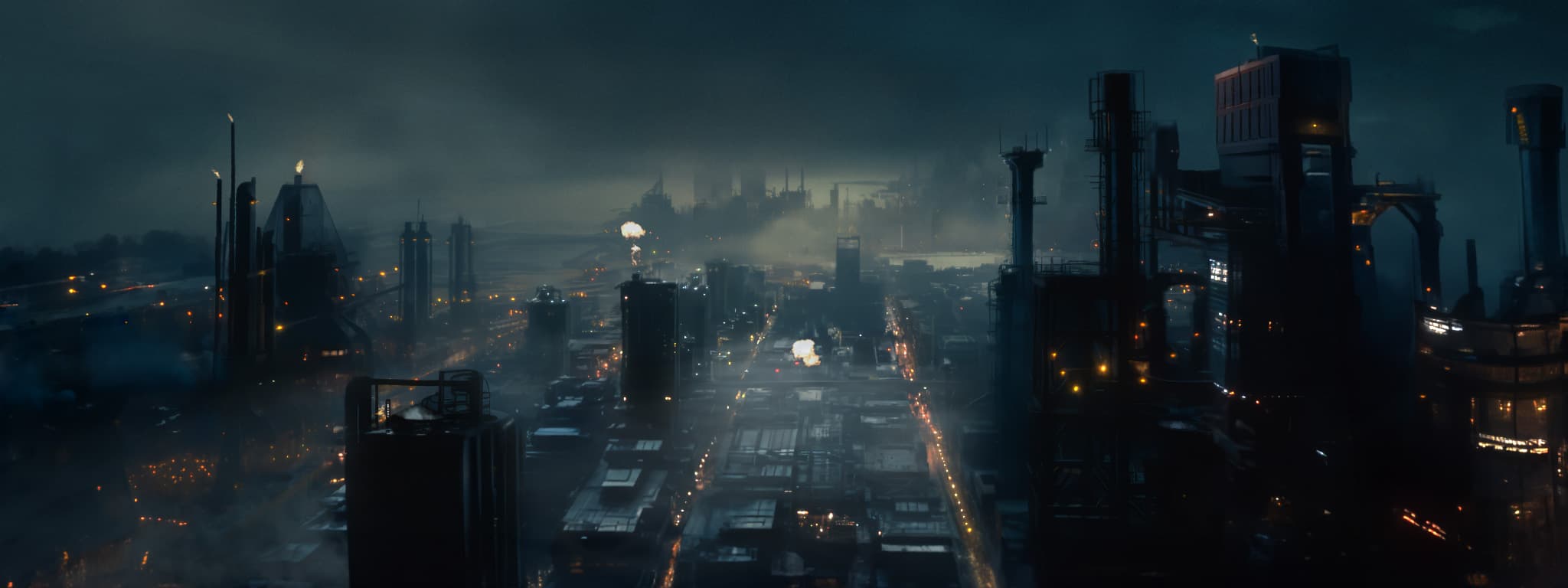
Getting Started with VFX Stock Footage and Overlays
Visual effects, or VFX, have become a crucial part of filmmaking, video games, and advertisements, bringing life to imaginary worlds and creatures. One of the easiest ways to incorporate VFX into your work is by using VFX stock footage.
Starting with VFX can seem overwhelming if you’re a beginner, but don’t worry; you’re not alone in this journey. With the proper tools and resources, anyone can create visual effects quickly and easily.
Whether you’re a hobbyist or a professional, FX Elements has all the visual effects stock footage, video overlays, and assets you need to get started on your VFX journey. Your imagination is the only limit! So what are you waiting for? Let’s get started!
WHY USE VFX STOCK FOOTAGE IN YOUR PROJECTS?
Visual effects can enhance your storytelling by creating visuals that would be too dangerous, expensive, or simply impossible to capture on camera. Additionally, VFX stock footage makes creating VFX easier than ever before.

VERSATILITY
One of the main reasons to use VFX stock footage in your projects is versatility. You can employ VFX to create a wide range of effects, from realistic explosions and weather phenomena to fantasy creatures and futuristic technology. This flexibility enables you to tell your stories more effectively, as well as explore new creative possibilities.
COST
Furthermore, incorporating VFX overlays in your projects can also help reduce production costs. For instance, digitally creating difficult or expensive scenes eliminates the need for costly sets, props, or extensive location scouting. Additionally, the availability of VFX stock footage makes it easy to find the perfect effect for your scene without hiring a team of visual effects artists.
SPEED
Another advantage of using VFX stock footage is the time-saving aspect. Working with FX Elements allows you to quickly add polish and visual interest to your projects without having to spend hours designing effects from scratch. Since the assets are pre-rendered, you can easily drag and drop them into your project and customize them as needed. This lets you focus more on other aspects of your video or film production, such as storytelling and editing.
Types of VFX Stock Footage
There is a variety of types of VFX stock footage available, such as explosions, fire, smoke and fog, space, liquid effects, and more. Many of these stock assets are pre-rendered and ready to use in any kind of project without the need for additional rendering.
The FX Elements subscription option gives you access to all of the effects categories above. With the FX Subscription you can download what you need as you need it!

HOW TO CREATE VISUAL EFFECTS
There are two main ways to create VFX assets: from scratch or using stock videos.
VFX FROM SCRATCH
Creating VFX assets from scratch can be an exciting but challenging experience. First, familiarize yourself with the software options you have, such as Blender or Houdini, or Maya.
Pros / Cons of Creating VFX from Scratch
Control
If you create your own VFX assets, you’ll have complete control over the look and feel of the effects. This is the primary advantage of choosing this option.
Time
Creating VFX assets from scratch generally takes a lot of time and effort. First, you’ll need to learn the VFX software (if you don’t already know how to use it), and second, you’ll need to simulate and render your elements which can take hours or even days.
Specialized Knowledge Required
Creating believable, high-quality VFX assets requires specialized knowledge of the software, as well as a deep understanding of light and physics principles. At large VFX and Animation studios, there are dedicated team members whose sole objective is to simulate natural phenomena and physics-based assets.
Questionable Quality
When creating VFX assets from scratch, there’s no guarantee the quality will be of an acceptable level. Learning to create effects is difficult, but learning to create photorealistic VFX assets is very hard indeed.
Learning VFX software can be a lengthy process. Give yourself the proper amount of time to learn the interface, tools, and features by watching tutorials, reading the documentation, and possibly taking full emersion courses.
Using Stock Videos
Utilizing VFX stock footage can significantly speed up your workflow, especially when creating complex or time-consuming effects. Many online resources offer a diverse range of pre-made stock footage, such as FX Elements or Video Copilot.
Pros / Cons of Using VFX Stock Footage
Saves time
With VFX stock footage, there’s no need to learn specialized software or to create the effects yourself. You simply pick out the effect that works for you and drag and drop it into your project.
Compatibility
VFX overlays can be used in NLEs (video editing apps) as well as dedicated VFX digital compositing software.
High-Quality
When using stock video elements, you can immediately see and know the quality of the effect before you even incorporate it into your footage. There’s no need to wait for a render. You simply preview the video and drop it into your project if it suits your needs.
Available Options
Sometimes you just can’t find an element that will suit your needs. This could be because the camera angle of the stock element doesn’t match your background plate, or the size and speed of the element isn’t what you want.
While most elements can be scaled, rotated, and transformed to suit a wide variety of needs, sometimes they just don’t fit the vision you have.
Licensing
Some media companies don’t allow their artists to use 3rd party footage. Even if the stock footage license is royalty-free and allows for commercial usage, some legal teams have strict limitations they enforce on their artists.
HOW TO GET STARTED WITH VFX STOCK FOOTAGE

ANALYZE YOUR FOOTAGE
Start by taking a close look at your primary video footage. Analyze the camera angles, motion, lighting, and composition. This will allow you to better understand how to integrate VFX Elements harmoniously with your existing footage.
IDENTIFY YOUR NEEDS
Once you have a clear understanding of your primary footage, identify the specific stock video effects you want to incorporate. This could include video overlays, special effects, or other elements that will enhance your project. Be clear about your intentions and how they will contribute to the visual storytelling.
CHOOSE YOUR ELEMENTS
Now it’s time to search for the perfect elements. You can use our search page to search and filter the results based on various parameters. Hovering over any element will play a video preview so that you can quickly visualize all the options available.
EDIT THE ELEMENTS
After choosing the VFX stock footage, it’s time to edit and incorporate them into your project. Getting the footage into your project should be as simple as dragging and dropping the ProRes Quicktime or R3D file into your project. Once you have the asset in your project, you can align, color correct, and composite the VFX stock footage with your primary footage to create a cohesive and captivating visual experience.
What Software Can I Use to Create VFX?
As you embark on your journey into the world of visual effects, it’s important to familiarize yourself with the right tools for the job. This section will outline the best VFX software options for creating visual effects and editing software (NLEs) that are also capable of integrating VFX stock footage natively.
DIGITAL COMPOSITING SOFTWARE
Adobe After Effects
One of the oldest and most popular digital compositing and VFX software is After Effects. Individuals working in the film, television, gaming, and advertising industries use After Effects for compositing and motion graphics.
Nuke
Nuke is the industry standard for compositing. It has been used in virtually every VFX academy award winner since its inception at Digital Domain in the early 2000s. It features a node-based compositing system that allows you to build complicated VFX shots. For pure compositing, its power and flexibility are unmatched.
However, there are two downsides to Nuke; first, it is not cheap, so it can be difficult for a new artist to afford, and second, the node-based workflow can be unintuitive for some. Luckily, there is a non-commercial version available for users working on personal projects or learning VFX.
Autodesk Flame
Autodesk Flame is a powerful and comprehensive VFX, editing, and compositing software used by professionals in the film industry. It offers an advanced 3D compositing environment with a variety of tools to create realistic and high-quality effects. Flame is most commonly used in the finishing and color grading stages of post-production, where it excels.
Fusion
Fusion is a powerful VFX tool that focuses on node-based compositing software, similar to Nuke. It is a free VFX software that comes bundled with DaVinci Resolve. It’s a powerful tool for creating VFX, and it’s particularly good for working with 3D elements.
Natron
Natron is another free (an open-source) compositing application that offers a very similar user interface and functionality to Nuke. If you like Nuke’s workflow but can’t afford a license, Natron is a great alternative.
3D SOFTWARE
Blender
A powerful and open-source 3D creation suite with features like sculpting, animation, and dynamics. It is one of the best free VFX software options available.
Houdini
Houdini is an incredibly powerful and versatile 3D tool. It’s used by professional studios to create high-end effects that you see in movies and television.
Maya
Maya is a powerful 3D creation suite used in many feature film productions. It has a variety of features, including animation, rigging, and dynamics. It also has its own VFX tools, such as fluids and particles, for creating dynamic effects.
Cinema 4D
Cinema 4D is a 3D software often used in the motion graphics and visual effects industry. It’s easy to use with a very intuitive user interface, making it great for beginners. It also has some powerful features like procedural modeling for creating complex geometries quickly.
Editing Software
While VFX-specific software options are perfect for crafting stunning visual aesthetics, you can also use editing software to achieve great results. Here are a few popular Non-Linear Editors (NLEs):
Final Cut Pro
Exclusive to macOS users and widely used among filmmakers, Final Cut Pro is a highly efficient editing software with top-notch VFX capabilities.
Adobe Premiere Pro
Part of the Adobe Creative Cloud, Premiere Pro is a favorite of filmmakers and content creators. It seamlessly integrates with Adobe After Effects, a dedicated VFX software, to create breathtaking visual effects.
DaVinci Resolve
A professional-grade free NLE / Color Suite / Digital Compositing tool used in Hollywood for color grading, editing, and visual effects.
HitFilm
HitFilm is both a non-linear editing and compositing software rolled into one. It offers a powerful and intuitive workflow with an extensive array of VFX tools.
There are many other VFX and NLE software that we could list here, but these are the most popular and widely used options for working with VFX, and they should give you a good foundation for starting your VFX journey. To learn more check out our intro to VFX guide to take a more in depth look at visual effects.
Conclusion
In your journey to integrate VFX into your work, learning how to use and take advantage of VFX stock footage and overlays is a valuable skill. By utilizing readily available resources, such as our free special effects downloads, you can save time and effort and focus on honing your skills.
Remember that practice is key as you develop your expertise in compositing, enhancing, and creating realistic visual effects.
